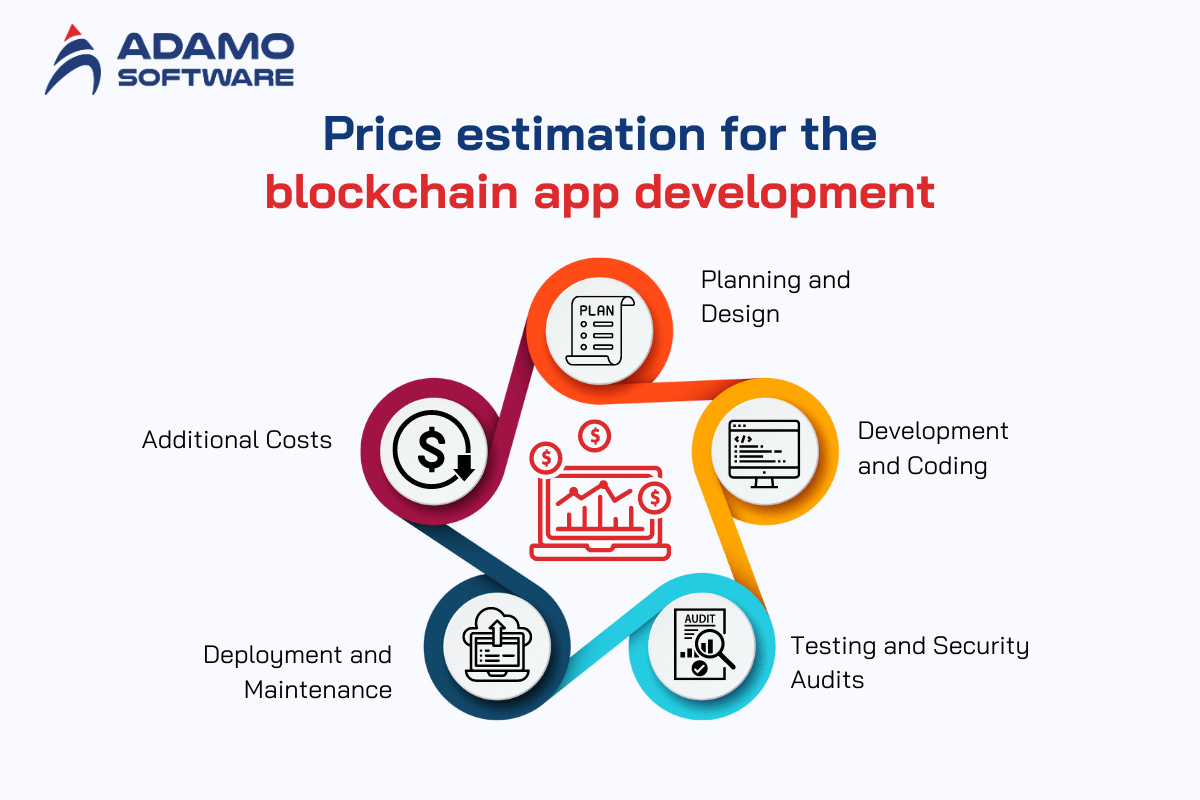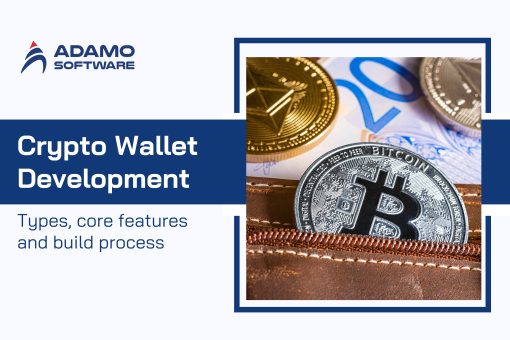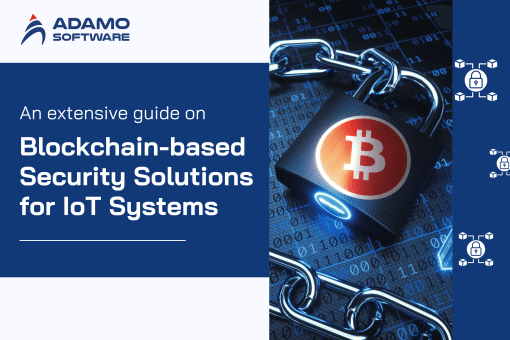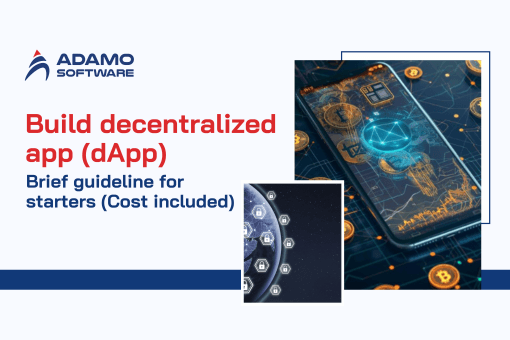Blockchain app development cost: Factors impact and price estimates

Blockchain technology is transforming industries. It improved security, combined with the effectiveness and audibility of specific processes. Due to companies’ rising adoption of blockchain, there is an emerging concern about the blockchain app development cost. In conclusion, irrespective of a firm’s status, it creates a blockchain application that demands equal financial and technical feasibility consideration.
The blockchain app development cost differs from one project to another, depending on the application, the functional requirements, and the team. Looking at the market, different fields like finance, healthcare, and supply chain management are affected by this technology. Special attributes determining the blockchain app development cost are the platform’s type, the complexity, and specialized developers’ requirements. Additionally, the clear price estimate allows businesspeople to plan properly and make the right decisions regarding the resources to use.
With Adamo, you will get an excellent blockchain app developed for an affordable price, granting your business the advantages of blockchain solutions. Awareness of these costs and how to address them will empower you towards optimal spending on blockchain.
Having reviewed the key factors and the price estimates, you can make strategic decisions that fit your purpose. It also helps you avoid iterations that would increase the blockchain app development cost.
I. A quick overview of the blockchain market
The blockchain market has increased in the past few years with companies adopting the technology to improve security, transparency, and system efficiency. Blockchain technology was first adopted for the technology behind cryptocurrencies such as Bitcoin. Now it has found use in several fields such as healthcare, supply chain, real estate, and financial sectors. This increased usage propels the adoption of blockchain-based applications and creates more traffic toward the blockchain app development cost.
With companies searching for business use cases to apply blockchain, the market evolves in breadth. For example, decentralized finance (DeFi) is a financial system that promotes P2P transactions without the help of major institutions. Similarly, the supply chain or logistics industry is implementing blockchain to keep track of the products more transparently. On the same side, the healthcare industry uses technology for patient records management. In these use cases, one can notice the growing need for blockchain. Therefore, we have to consider the blockchain app development cost.
As the blockchain market develops, companies are eager to establish new uses for the service to stand out from their competitors. This growth creates a strong need for skilled developers, specialized platforms, improvements, and tailored solutions. They play a role in the blockchain app development cost. Therefore, by closely observing the market and the technological progress, businesses shall be sure of blockchain app development costs.
Also read: Enterprise blockchain development: Features and real-world applications
II. Aspects that determine the cost of developing a blockchain app
Going deeper into factors that impact the overall blockchain app development cost, the points below will make any business better equipped to plan for the costs. All these factors have their implications on the overall expense in terms of the application’s complexity and the efficiency of the working team. Here are what you need to consider:

1. App Complexity
The effort into designing the app determines the cost of developing the blockchain app in a way proportional to its complexity. A basic app will be less expensive than one with features like smart contracts, multiple signature transactions, or complex data layers. If the features are complicated, the time taken during the development process increases, and costs rise.
2. Blockchain Platform
It has been established that the development environments of various blockchain platforms are unique, and therefore the costs differ. For example, if the development is done on a public blockchain, it may be cheaper or costlier than having the private blockchain from the ground up.
Since public blockchains already exist, they provide solutions that cut the overall blockchain app development cost. However, unlike creating the public network, developing a private blockchain is only possible on a created network. This may cost tens of thousands of dollars due to the additional coding, testing, and infrastructure design.
3. App Features and Integrations
The activities that you want your blockchain app to have will also determine the cost of the app. Adding functionalities such as smart contracts, consensus mechanisms, multi-layered security, or real-time will cause analysis, design, programming, testing, and subsequent methods to take more time and money. Similarly, third-party payment gateway integrations or other APIs create a more costly solution when implemented into the blockchain app.
4. Team Expertise and Location
Hiring a development team with experience or those in developed countries results in high blockchain app development costs. Evaluating a team with a high understanding of blockchain technologies, cryptography, and secure coding is crucial but expensive. Moreover, the price for developers depends on their region. Developers in North America and Europe will cost more than in Asia or Eastern Europe.
5. Development Time and Testing
The development time and the rigorous testing contributed to the costs. As the development cycles are extended, more resources are required for the blockchain app development. Therefore, it raises funds. Testing is even more critical for blockchain app development, given that the app’s weaknesses can compromise it greatly.
Therefore, with the help of the materials provided, one can identify the factors that define the blockchain app development cost. As a result, you can make wiser decisions for budgeting. By estimating the application complexity, the choice of the platform, features, integration, expertise, and development duration, companies can easily approximate the overall cost incurred to create the blockchain app.
III. Price estimation for the blockchain app development
The following factors should be considered when approaching the estimated cost of creating a blockchain app. The total cost can range, due to the size and scale of the project, from relatively low to very high.
Each phase of development can be established and known by the businesses how much will be required to invest in each part. Here is a rough breakdown of the points that can help you predict the blockchain app development cost.

1. Planning and Design
The first step in creating a blockchain application is setting up the wireframes. This entails setting the project objectives, choosing which platform to develop, the UI layout, and the UX design. Depending upon the design phase, it takes from $5,000 to $30,000, which will affect the blockchain app development cost.
2. Development and Coding
This is the costliest in the development of blockchain applications. In this phase, developers write the code, develop and compile the smart contracts, and implement a wallet or any transaction system to incorporate. The blockchain app development cost varies in terms of features, blockchain type (public or private), and the platform used. It could cost as little as $30,000 to $ 100,000 for a simple application. That being said, if an app is to contain additional features like multi-signature wallets, and dApps, or if it is targeting enterprises, the cost of developing a blockchain app might soar past the $200000 mark.
3. Testing and Security Audits
Security is important in the development of blockchain. Testing is therefore very intensive to ascertain that the app is safe without loopholes. Developers must perform functional tests, bug fixing, and smart contract audits to secure it. Testing and auditing will further increase the blockchain app development cost by $10,000–$50,000, depending on the type of testing methods and the app itself.
4. Deployment and Maintenance
After the development and testing of the app, it has to be deployed. New can also imply more infrastructure overheads, more so where private blockchain solutions are being used may require additional server settings.
The cost is relatively low, ranging from $10 to $20 thousand. Further, to keep the app operational, always available, safe, and up to date with the introduced changes, maintenance is required. It can cost from $5,000 to $15,000 annually, thus influencing the total cost of blockchain app development.
5. Additional Costs
Some additional features, like the incorporation of third-party payment solutions, enhanced security features, or meeting legal or compliance requirements, can lead to the addition of blockchain app development costs. These additional costs depend on the needs of the business and range from $5,000 to $50,000.
To sum up, the cost of blockchain app development ranges from $50,000 for a basic prototype to $200,000 for complex solutions. Business development strategies should consider every phase and any other costs that may be incurred.
IV. Adamo Software can bring a friendly budget with high-quality blockchain app development
Blockchains can be integrated into existence by the services of Adamo Software at a very affordable charge, and the high-quality services offered here. Realizing that the blockchain app development cost can be prohibitive – particularly to start-ups and SMEs – Adamo Software delivers every project with an affordable price ceiling without sacrificing quality or functionality.

Adamo Software still treats other projects as unique. Our major goal is successful blockchain implementation in a particular client’s project and conforming to the latter’s expectations and company’s standards. Application developers within our team possess vast experience in developing applications based on innovative technologies while meeting strict standards of web applications’ scalability, security, and user-friendliness. Efficient development methodologies combined with open source blockchain platforms allow us to offer excellent value for the selected monetary price. Therefore, we ensure maximum security.
We also get flexibly priced to ensure that we meet the financial requirements of our potential clients. This boosts the business prospects as it offers the benefits of blockchain and does not require a huge amount of investment. Clients perceive how resources are being used regarding the blockchain app development cost. This is due to our policy on transparency in our prices.
Apart from cost control, Adamo Software aims to create more value in the long run. The blockchain apps we develop are sustainable and flexible enough to accommodate future changes in the business. From building minimal blockchain apps to creating sophisticated dApps, Adamo Software possesses the experience and resources to design a blockchain app that will be effective across your business and realistic about blockchain app development costs.
FAQs
1. What techniques can I use to make the development of the blockchain cheap?
As a result, the given work presents several approaches towards the cost reduction of blockchain app development. Firstly, select basic blockchain platforms such as Ethereum or Hyperledger. This entails low licensing charges since they are open source, besides extending the time settled on development. These enable one to obtain solutions that have been designed in advance, hence reducing the cost of developing them.
Second, enforcing specific core competencies of an app and thereby concentrating on main functionalities helps to cut expenses. Businesses should refuse to include complexity or features that are not critical because they save time and money.
Third, there is a possibility to outsource development to countries with lower wages, like Eastern Europe or Asia, which are regularly called emerging markets. Finally, the phased development approach enables one to get a feel for the side of the product before the entire budget is expended. Hence, it allows one to adjust the amount spent at a particular phase since the subsequent phases are more complex.
2. What are some common features of blockchains?
Several components are usual to most blockchain apps, and knowing them will help determine the cost of developing a blockchain app. The most common features are:
- Decentralization: The distributed ledger technology means the records are stored in several locations so the data.
- Immutability: The data recording has high security. It cannot be tampered with, giving it a permanent record of the completed transactions on the blockchain.
- Transparency: Each interaction is transparent to all the parties involved in a network, thus encouraging the provision of quality service.
- Smart Contracts: ‘Smart contracts’ are programmed contracts. Parties can write the contract details in the program code and execute the contract without a middleman.
- Security: The cryptographic approaches of the blockchain guarantee that all the information recorded is safe and immune to alteration.
Adding these features will affect the blockchain app development cost. These features are complex, and developers need to invest time and money by utilizing extra capabilities available in the technology.
3. How long does it take to build a blockchain?
The time it takes for blockchain app development depends on the application and the nature of the features enclosed. This defines the blockchain app development cost. A basic blockchain app development may require two to three months. However, an app with features like smart contracting, multiple layers of security, and decentralized Clergy will take anywhere between 6 months and one year or more.
Some phases are planning, design, development, testing, and even the deployment phase. All these phases are crucial, and feature development or customizations required will take longer. Also, if intense testing and security auditing are performed, there might be an inherent part of decentralized application development. The overall time of app development is prolonged, thus raising the blockchain app development cost.











